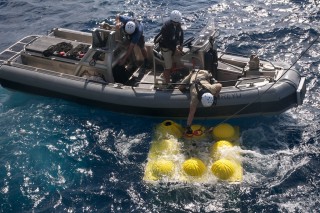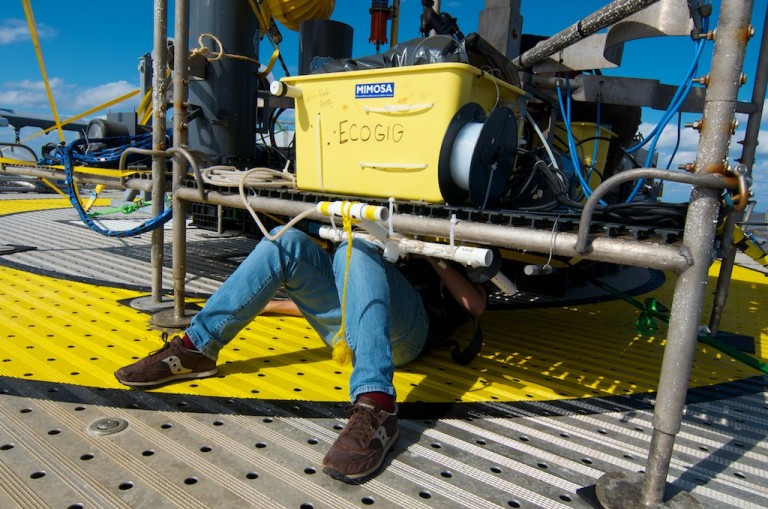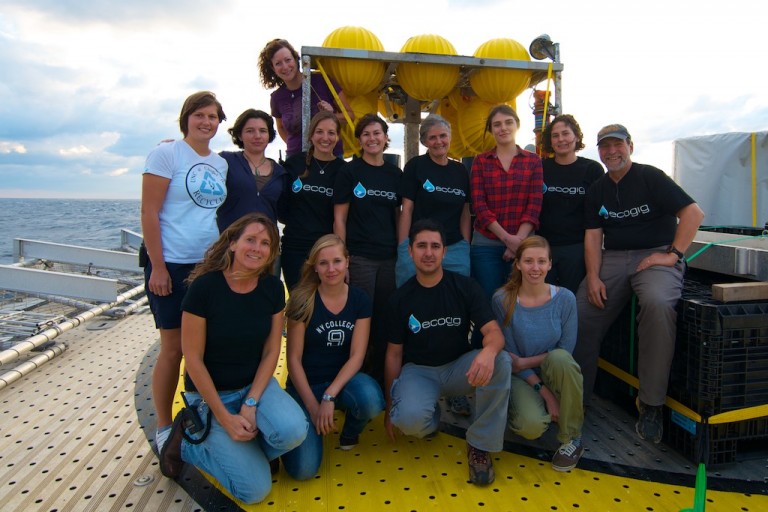Second benthic lander was recovered today using ROV Global Explorer MK3 from R/VFalkor. This lander was taking measurements and collecting water samples since April 2012 on the seafloor near Macondo wellhead, the source of Deepwater Horizon Oil Spill.

ROV Global Explorer MK3 was deployed at that site, identified as OC26, earlier during this cruise to survey the lander and prepare it for recovery. Originally R/V Falkor was scheduled to meet a second ship, R/V Pelican, that was expected to assist with the lander recovery operations, however, weather delays forced the cancellation of R/V Pelican cruise, and the team aboard Falkor had to recover the lander on their own.
This morning, ROV Global Explorer MK3 was launched to the OC26 lander for the second time. With the lander’s mechanical release firmly grasped by the manipulator arm, ROV pilots gently pulled the vehicle backwards using ROV thrusters to disconnect the lander from the anchor weights on the seafloor. The lander was released and quickly lifted off the seafloor. It took about 40 minutes for the lander to travel 1,600 meters to the surface. The lander’s ascent through the water column was closely monitored by Beth Orcutt who used an acoustic “deck box” configured for the lander’s frequency to maintain constant contact with the lander.

R/V Falkor crew launched a workboat to assist with the lander recovery, and the starboard crane was used to lift the lander onto the helicopter deck, next to the previously recovered GC600 lander. The scientists offloaded the samples into the cold van and prepared them for shipment back to the laboratories for post-cruise analyses.
Strong currents prevented a second ROV dive this afternoon, and the research plans were adjusted to use the multicore for collection of additional sediment cores. R/V Falkor repositioned to a site where earlier mapping produced evidence of another natural plume. Unfortunately, the multicore apparently hit rocky seafloor during this deployment—when it was hauled in, the central metal shaft appeared to be bent. The researchers were able to salvage several of the cores and spent the rest of the day processing them. R/V Falkor engineering crew volunteered to help the researchers repair the multicore for use during the remainder of this cruise.

At the end of the day, R/V Falkor began the transit back to Pascagoula where there will be an exchange of scientific personnel for the second leg of the expedition.
